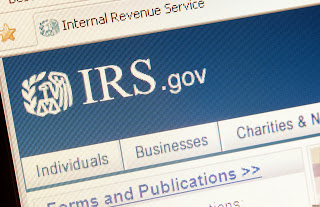You’ll be receiving a copy of your 2013 IRS Form 1099-R, Distributions From Pensions, Annuities, Retirement or Profit-Sharing Plans, IRAs, Insurance Contracts, etc., if you took a distribution from your employer retirement plan or IRA last year. The employer plan or IRA custodian has to send you a copy by January 31, 2014. You’ll need to give your tax preparer a copy of it so that your retirement plan distributions are correctly reported on your federal income tax return. For 2013, there are two types of IRA distributions that are often confusing: qualified charitable distributions (QCDs) and rollovers between IRAs.

QCDs were available in 2013 but have expired. QCDs were tax-free transfers from your IRA at age 70 ½ or older that were sent directly to a charity. If you did a QCD last year, you may be surprised to find that the custodian will send you a Form 1099-R showing the distribution as taxable. While this may appear to be a mistake, it’s actually correct. There is no special Form 1099-R reporting for QCDs, but don’t worry; simply tell your tax preparer about it and he or she will show the QCD as a tax-free withdrawal when they do your tax return. See the instructions for IRS Form 1040 on how to do that.
Form 1099-R is also issued when you do a tax-free rollover of an IRA distribution to another IRA. The form will show the gross amount of your IRA distribution and also the taxable amount in boxes 1 and 2 respectively. Even though box 2 says that your distribution is taxable, this does not necessarily mean you owe taxes on that amount. Because rollovers are tax-free, tell your tax preparer that your IRA distribution was properly rolled over so he or she can show it as tax-free on your tax return. Note that IRS Form 5498 will show that the funds were rolled over to an IRA.
- By Joe Cicchinelli and Jared Trexler

QCDs were available in 2013 but have expired. QCDs were tax-free transfers from your IRA at age 70 ½ or older that were sent directly to a charity. If you did a QCD last year, you may be surprised to find that the custodian will send you a Form 1099-R showing the distribution as taxable. While this may appear to be a mistake, it’s actually correct. There is no special Form 1099-R reporting for QCDs, but don’t worry; simply tell your tax preparer about it and he or she will show the QCD as a tax-free withdrawal when they do your tax return. See the instructions for IRS Form 1040 on how to do that.
Form 1099-R is also issued when you do a tax-free rollover of an IRA distribution to another IRA. The form will show the gross amount of your IRA distribution and also the taxable amount in boxes 1 and 2 respectively. Even though box 2 says that your distribution is taxable, this does not necessarily mean you owe taxes on that amount. Because rollovers are tax-free, tell your tax preparer that your IRA distribution was properly rolled over so he or she can show it as tax-free on your tax return. Note that IRS Form 5498 will show that the funds were rolled over to an IRA.
- By Joe Cicchinelli and Jared Trexler























